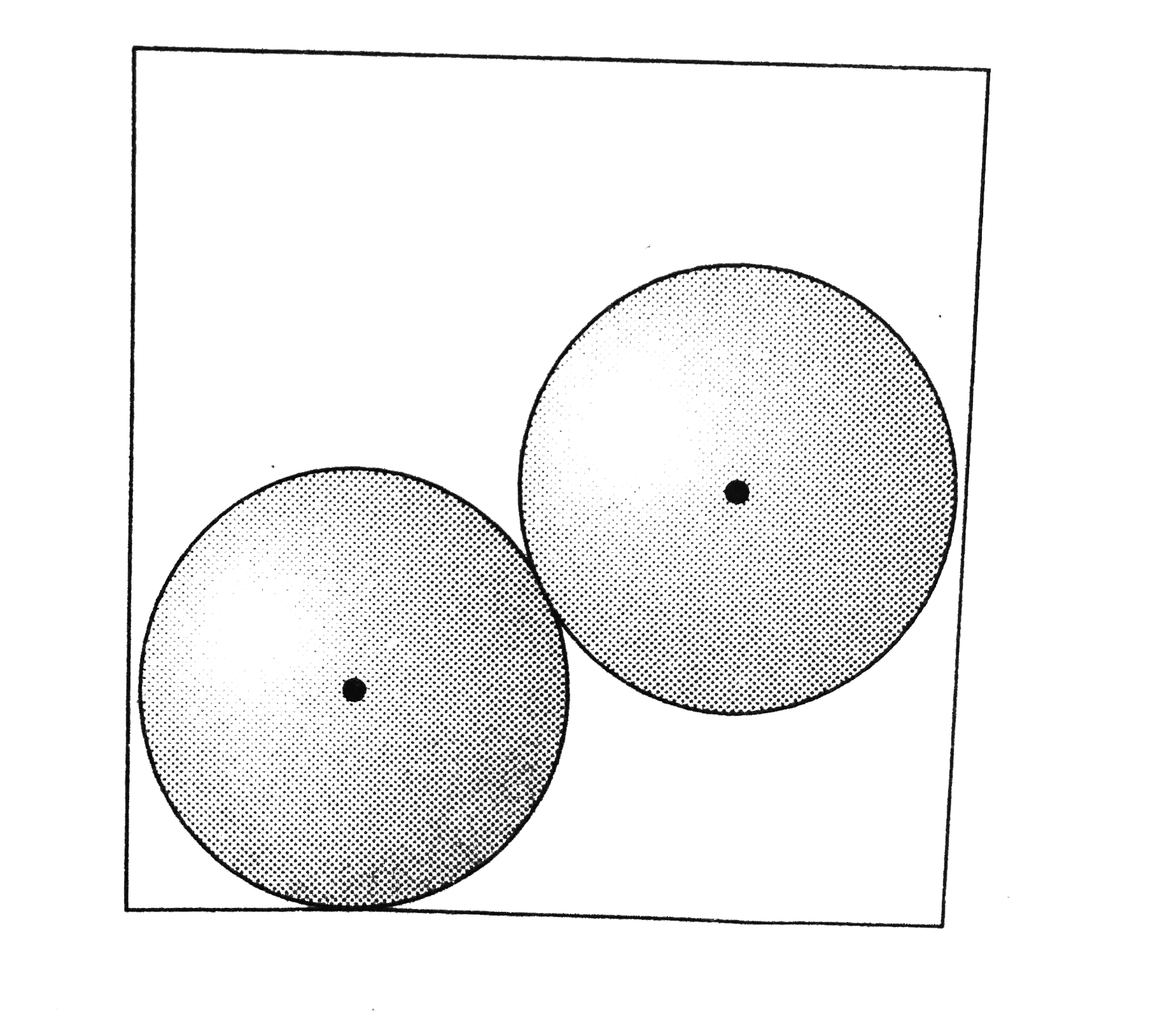A hollow metallic sphere of radius 20cm surrounds a concentric metallic sphere of radius 5cm. The space between the two sphere is filled with a nonmetallic material. The inner and outer sphere are maintained at 50∘C and 10∘C respectively and it is found that 100J of heat passes from the inner sphere to the outer sphere per second. Find the thermal conductivity of the material between the sphere.
The correct Answer is:A, C
To solve the problem, we need to find the thermal conductivity of the non-metallic material between the two concentric spheres. We will use the formula derived from Fourier's law of heat conduction for spherical coordinates.
1. Identify the Given Values:
- Inner radius R1=5cm=0.05m
- Outer radius R2=20cm=0.20m
- Temperature of the inner sphere T1=50°C
- Temperature of the outer sphere T2=10°C
- Heat transfer rate ΔQ=100J/s
2. Use the Heat Transfer Formula for Spheres:
The formula for the heat transfer rate through a spherical shell is given by:
ΔQ=4πkR1R2(T1−T2)R2−R1
where k is the thermal conductivity we need to find.
3. Substitute the Known Values:
Substitute the known values into the equation:
100=4πk(0.05)(0.20)(50−10)0.20−0.05
4. Simplify the Equation:
Calculate the temperature difference:
T1−T2=50−10=40°C
The denominator R2−R1 becomes:
0.20−0.05=0.15m
Thus, the equation simplifies to:
100=4πk(0.05)(0.20)(40)0.15
5. Rearranging the Equation:
Rearranging to solve for k:
k=100×0.154π(0.05)(0.20)(40)
6. Calculate k:
Now calculate the value:
k=154π(0.05)(0.20)(40)
First calculate the denominator:
4π(0.05)(0.20)(40)=4×3.14×0.05×0.20×40
=4×3.14×0.01×40=4×3.14×0.4=5.024
Now substituting back:
k=155.024≈2.98W/m°C
7. Final Result:
Rounding off, we find:
k≈3W/m°C
Final Answer:
The thermal conductivity of the non-metallic material is approximately 3W/m°C.
- Inner radius R1=5cm=0.05m
- Outer radius R2=20cm=0.20m
- Temperature of the inner sphere T1=50°C
- Temperature of the outer sphere T2=10°C
- Heat transfer rate ΔQ=100J/s
The formula for the heat transfer rate through a spherical shell is given by:
ΔQ=4πkR1R2(T1−T2)R2−R1
where k is the thermal conductivity we need to find.
Substitute the known values into the equation:
100=4πk(0.05)(0.20)(50−10)0.20−0.05
Calculate the temperature difference:
T1−T2=50−10=40°C
The denominator R2−R1 becomes:
0.20−0.05=0.15m
Thus, the equation simplifies to:
100=4πk(0.05)(0.20)(40)0.15
Rearranging to solve for k:
k=100×0.154π(0.05)(0.20)(40)
Now calculate the value:
k=154π(0.05)(0.20)(40)
First calculate the denominator:
4π(0.05)(0.20)(40)=4×3.14×0.05×0.20×40
=4×3.14×0.01×40=4×3.14×0.4=5.024
Now substituting back:
k=155.024≈2.98W/m°C
Rounding off, we find:
k≈3W/m°C
The thermal conductivity of the non-metallic material is approximately 3W/m°C.
Topper's Solved these Questions
- BOOK - HC VERMA ENGLISHCHAPTER - HEAT TRANSFEREXERCISE - QUESTIONS FOR SHORT ANSWER11videos
HEAT TRANSFER
- BOOK - HC VERMA ENGLISHCHAPTER - HEAT TRANSFEREXERCISE - OBJECTIVE II6videos
HEAT TRANSFER
- BOOK - HC VERMA ENGLISHCHAPTER - HEAT AND TEMPERATUREEXERCISE - Objective 26videos
HEAT AND TEMPERATURE
- BOOK - HC VERMA ENGLISHCHAPTER - INTRODUCTION TO PHYSICSEXERCISE - Question for short Answer4videos
INTRODUCTION TO PHYSICS
Similar Questions
A hollow metal sphere of radius 5cm is charged so that the potential on its surface is 10V. The potential at the centre of the sphere is
View SolutionA hollow metal sphere of radius 10cm is charged such that the potential on its surface is 80 V. The potential at the centre of the sphere is
View SolutionA hollow metal sphere of radius 10cm is charged such that the potential on its surface is 80 V. The potential at the centre of the sphere is
View SolutionA hollow metal sphere of radius 10 cm is charged such that the potential on its surface is 5 V. What is the potential at the centre of the sphere?
View SolutionA hollow metal sphere of radius 10 cm is charged such that the potential on its surface is 5 V. What is the potential at the centre of the sphere?
View SolutionA metallic solid sphere of radius 9 cm is melted to form a solid cylinder of radius 9 cm. Find the height of the cylinder.
View SolutionA sphere of 4cm radius is suspended within a hollow sphere of 6cm radius. The inner sphere is charged to potential 3 e.s.u. and the outer sphere is earthed. The charge on the inner sphere is
View SolutionA sphere of 4cm radius is suspended within a hollow sphere of 6cm radius. The inner sphere is charged to potential 3 e.s.u. and the outer sphere is earthed. The charge on the inner sphere is
View SolutionTwo smooth sphere each of radius 5cm and weight W rest one on the other inside a fixed smooth cylinder of radius 8cm. The reaction between the sphere and the vertical side of the cylinder are:
 View Solution
View SolutionTwo smooth sphere each of radius 5cm and weight W rest one on the other inside a fixed smooth cylinder of radius 8cm. The reaction between the sphere and the vertical side of the cylinder are:
 View Solution
View Solution

